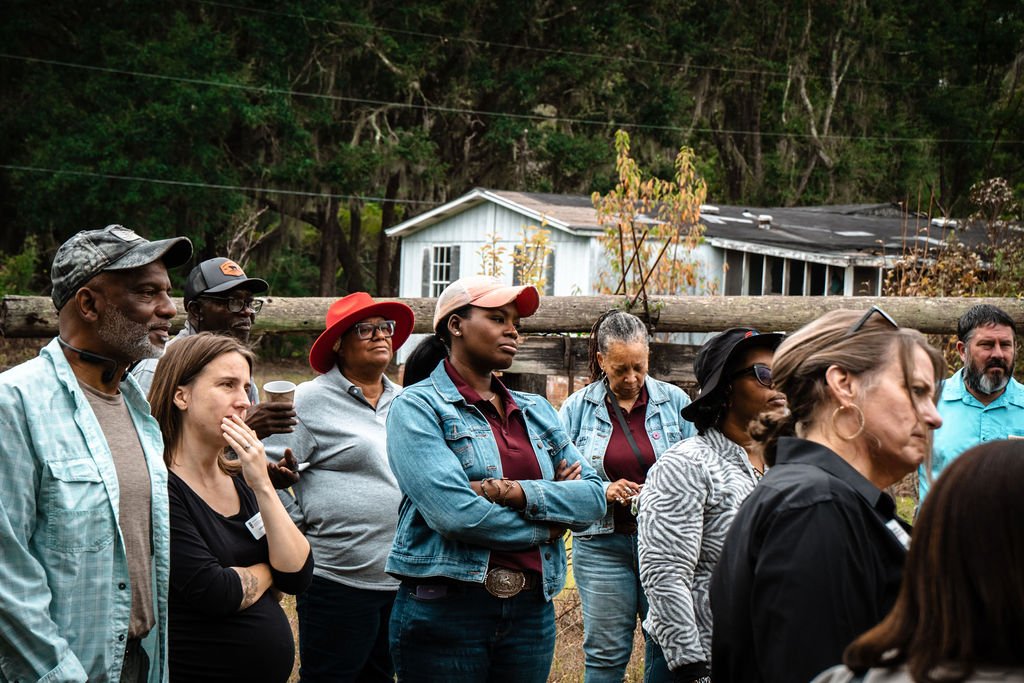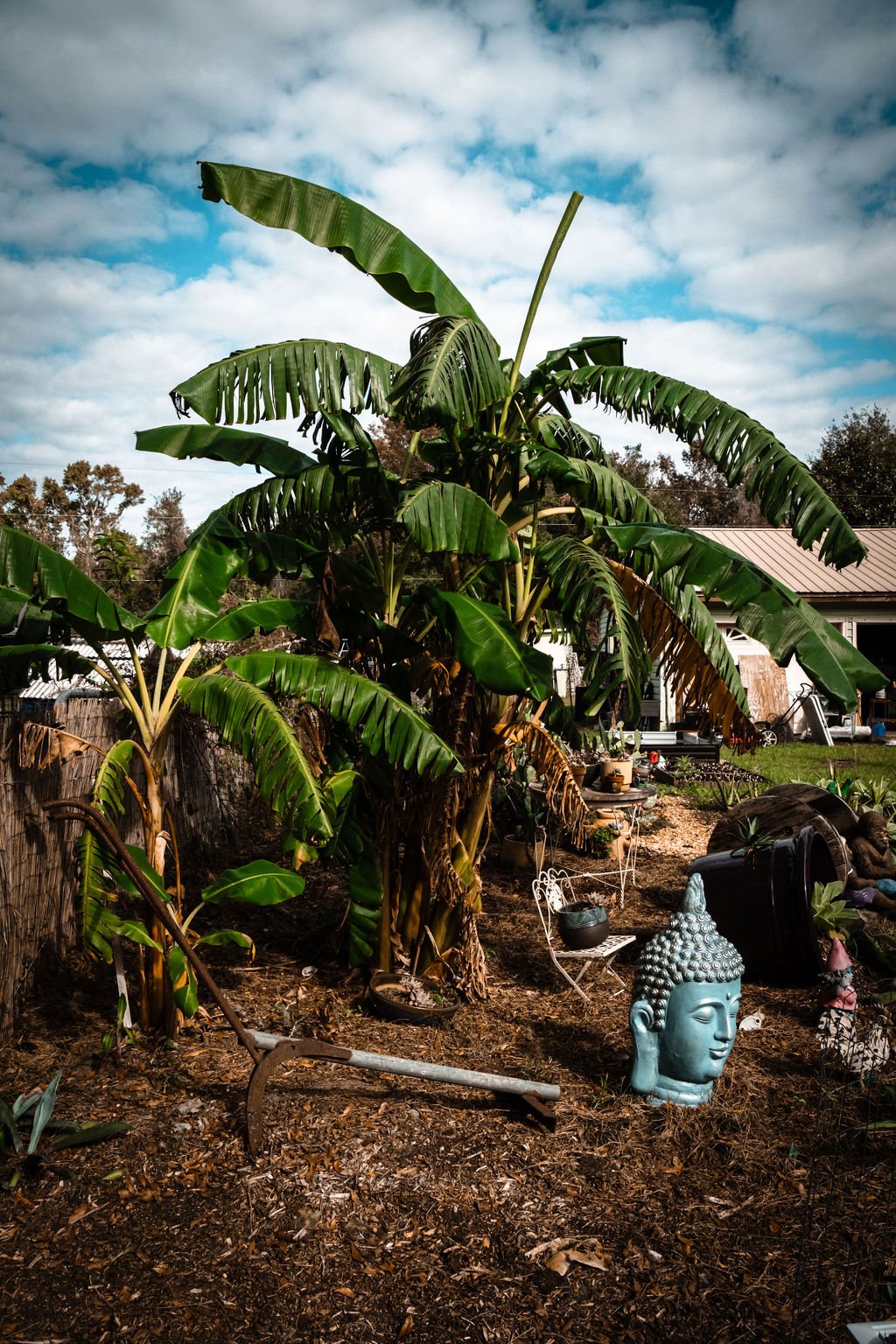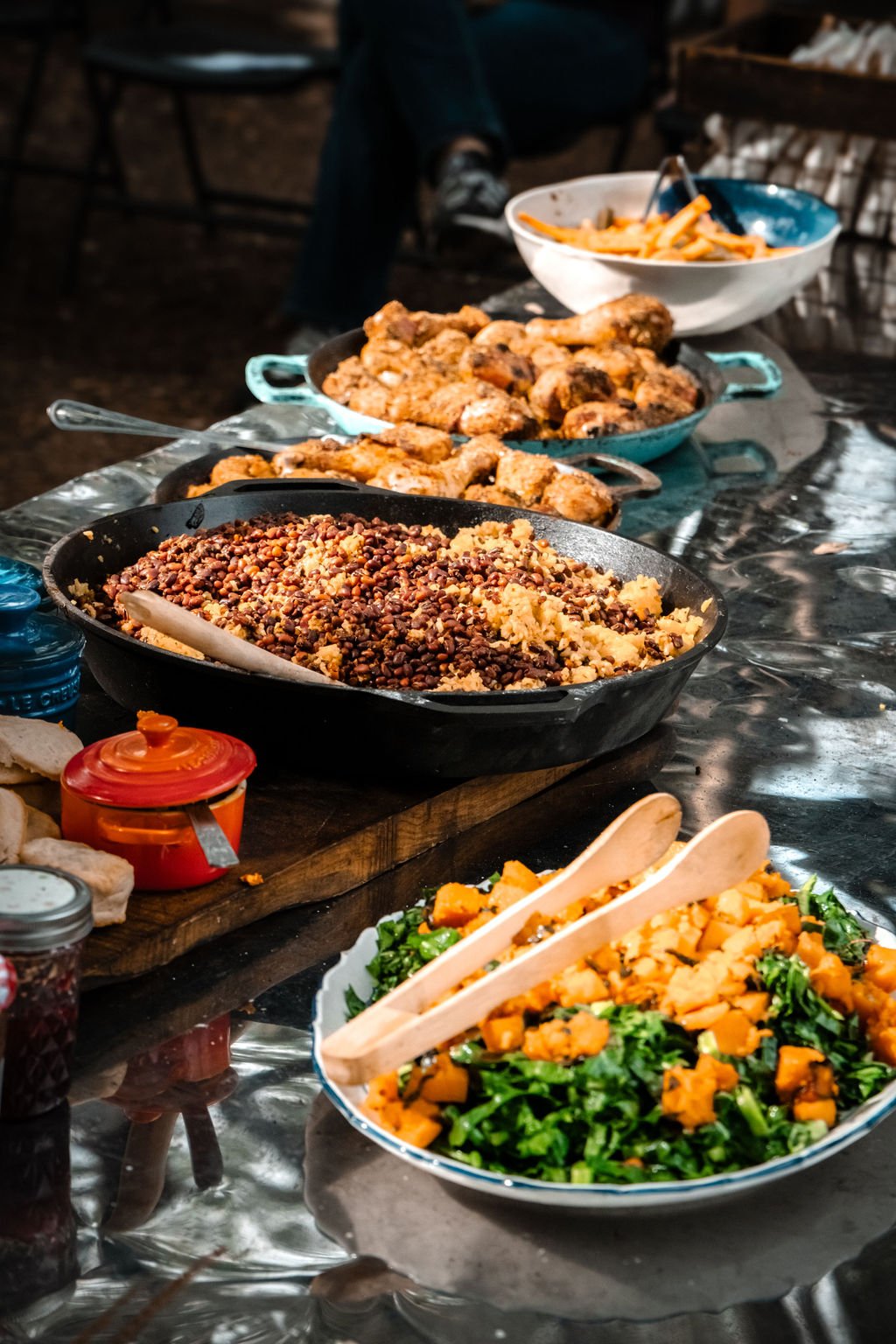By Kimberly Koogler
Kimberly Koogler is the Community Collaborations Manager at Georgia Organics
All photos taken at the Farmer Field Day at Gilliard Farms by Don Panicko
On November 19 Georgia Organics hosted Building Resiliency on Georgia Farms, a Farmer Field Day centered on strategies for Georgia farms to adapt to, bounce back from, and proactively prepare for severe weather-related events. In the midst of planning for the Field Day, Hurricane Helene left many Georgia farms along its path damaged and searching for resources, underscoring the importance of emergency preparedness. Remnants of the devastation were everywhere as the Georgia Organics team arrived in Southeast Georgia for the event.


The field day took place at Gilliard Farms in Brunswick, a 50-acre family-owned farm run by siblings Matthew and Althea Raiford. Dedicated to sustainable agriculture, the farm produces high-quality, locally-grown heirloom vegetables, fruits, and herbs using environmentally-friendly methods. In addition to farming, Matthew and his wife Tia run Strong Roots 9, an agritourism and value-added venture focused on nourishing the mind, body, and soul through food, products, and experiences. Strong Roots 9 explores African American foodways, reviving ancestral practices, and reconnecting communities with nature.
After providing a scrumptious breakfast consisting of homemade sweet cream biscuits, sausages and sautéed peppers, local jams, andouille butter, and hot coffee, Matthew and Tia shared some of the history of the land, their families, and their journey to becoming the renowned and beloved CheFarmer power duo that they are today. Matthew’s great great great grandfather, Jupiter Gilliard, who grew up enslaved in South Carolina, bought the land in 1874 and it has been in the family ever since.
As Matthew and Tia led attendees on a walking tour of their farm, they shared how they approach business sustainability by creatively turning what grows on their farm into value-added products, such as the specialty salt and sugar they make from their thriving Hoja Santa plant (aka “root beer plant”). It was inspiring to see how much they can do with just a little bit of space. Another example of their penchant for clever innovation was how they use the Spanish moss growing in abundance on their land as an eco-friendly packing material for shipping their value-added products. The 42 species of birds that dwell on their land ensure that the Spanish moss is free of chiggers and safe for this use. A few golden nuggets from their farm tour and talk included:
Being proactive in business planning, not reactive (on theme for the day’s content)
Thinking outside the box and being resourceful and innovative when considering how to get the most out of what you grow
Considering if every household in Georgia spent $10/week on local food, $21 million would flow back into the local economy
After touring the farm, Laura Ney of UGA’s Cooperative Extension in Athens presented on how to manage and improve soil structure in order to be better prepared for severe weather events. Her passion for soil science and sustainable soil management was infectious. Key takeaways from her presentation touched on:
The need to focus on building or maintaining ‘good’ soil structure and considerations on what you can do to protect soil aggregates.
The arrangement of soil particles into aggregates and the porous spaces between those aggregates helps soil to either hold onto or drain water. Plants can only take up nutrients through water when there are spaces in the soil, so soil structure is extremely important.
When in doubt, cover the soil up. In other words, plant cover crops, such as crimson clover, buckwheat, sorghum sudan grass, hairy vetch, field peas, etc.
Reduce/minimize soil tillage
Reduce soil compaction
Following Laura Ney’s presentation, Stuart Proctor of the Natural Resources Conservation Service (NRCS) demonstrated the difference in water absorption between diverse soil conditions by using a rainfall simulator. Attendees watched as the rainfall simulator dispersed water over five different example patches of land—forest soil, rotationally grazed pasture, overgrazed pasture, field tilled and crop planted with black oats, and stripped, bare soil. The group observed these key takeaways:
The richest and best managed soils absorbed rainfall the best, whereas the water ran off the stripped, overworked, and overgrazed soils.
One of many problems with soil runoff is that fertilizers bind to the soil particles that run off and are therefore not available to crops.
Stuart recommended the SARE book, Managing Cover Crop for Profitability to learn more about managing cover crops for improved soil structure and profitability.
Next up, Bryan McQuary, of the Risk Management Agency (RMA) of the USDA covered crop insurance options and record-keeping practices tailored to mid-sized farms. RMA manages the Federal Crop Insurance Corportation (FCIC) which was initially formed during the Great Depression under the New Deal. Highlights from his presentation included information on:
Whole-Farm Revenue Protection, for any farm with up to $17 million in insured revenue, including farms with specialty or organic commodities (both crops and livestock).
Micro Farm Program insurance plan, for any farm with up to $350,000 in insured revenue, including farms with specialty or organic commodities (both crops and livestock).
The biggest takeaway was that farms should pro-actively find an agent to get assistance and custom tailor coverage based on their anticipated needs.
Last but not least, Rebecca Mixon of the UGA Small Business Development Center shared insights on alternative revenue streams to support financial resilience. A few of the questions she asked attendees to consider as they assess their own situation in terms of financial resilience were:
What special skills do you have that are related to your business? (highlighting these special skills are important)
What special skills do you have that aren’t necessarily related to your business that you could bring in? (there may be an indirect way these skills can contribute to your business)
Are there resources that you’re not currently utilizing that you could? (think about community connection, for example)
How many revenue streams do you currently have? (and how many can you sustain in a healthy way)
The Farmer Field Day culminated in a spectacular lunch from Matthew and Tia that included a collard green salad with roasted butternut squash, roasted chicken, sea island red peas (a variety of heirloom cowpea that originated in the Gullah Geechee community of the Carolina Sea Islands), rice, and pickled vegetables while attendees mingled and connected with each other and the presenters before heading back to their farms.


WE’RE PROUD TO PARTNER WITH GEORGIA FARMERS
Thank you to Matthew, Althea and Tia Raiford of Gilliard Farms for hosting us on the farm, inviting us into conversation, and teaching us about your operation. Thank you to Laura Ney, Stuart Proctor, Bryan McQuary and Rebecca Mixon for lending your expertise.
To learn more about Gilliard Farms, visit gilliard-farms.com or follow them on Facebook (@gilliardfarm) and Instagram (@CheFarmerMatthew).
To connect with any of the presenter at this Farmer Field Day email farmerservices@georgiaorganics.org.
To learn more about Gilliard Farms visit gilliard-farms.com or follow them on Facebook and Instagram. To learn more about Strong Roots 9 visit strongroots9.com or follow them on Facebook and Instagram.
To learn more about Georgia Organics visit georgiaorganics.org or follow us on Facebook, Instagram, X, LinkedIn, and YouTube.
To learn more about our Georgia Organics Farmer Services programming, check out our website farmerservices.georgiaorganics.org.
Want to keep up to date on future farmer-focused events, farmer resources, updates, and news? Join our monthly e-newsletter, the Grower News, for all the latest! Sign-up HERE.
Funding for this Farmer Field Day was provided by the Debley Foundation, Takeda US Philanthropic Giving Program, Arthur Blank Family Foundation, and Drawdown GA.












